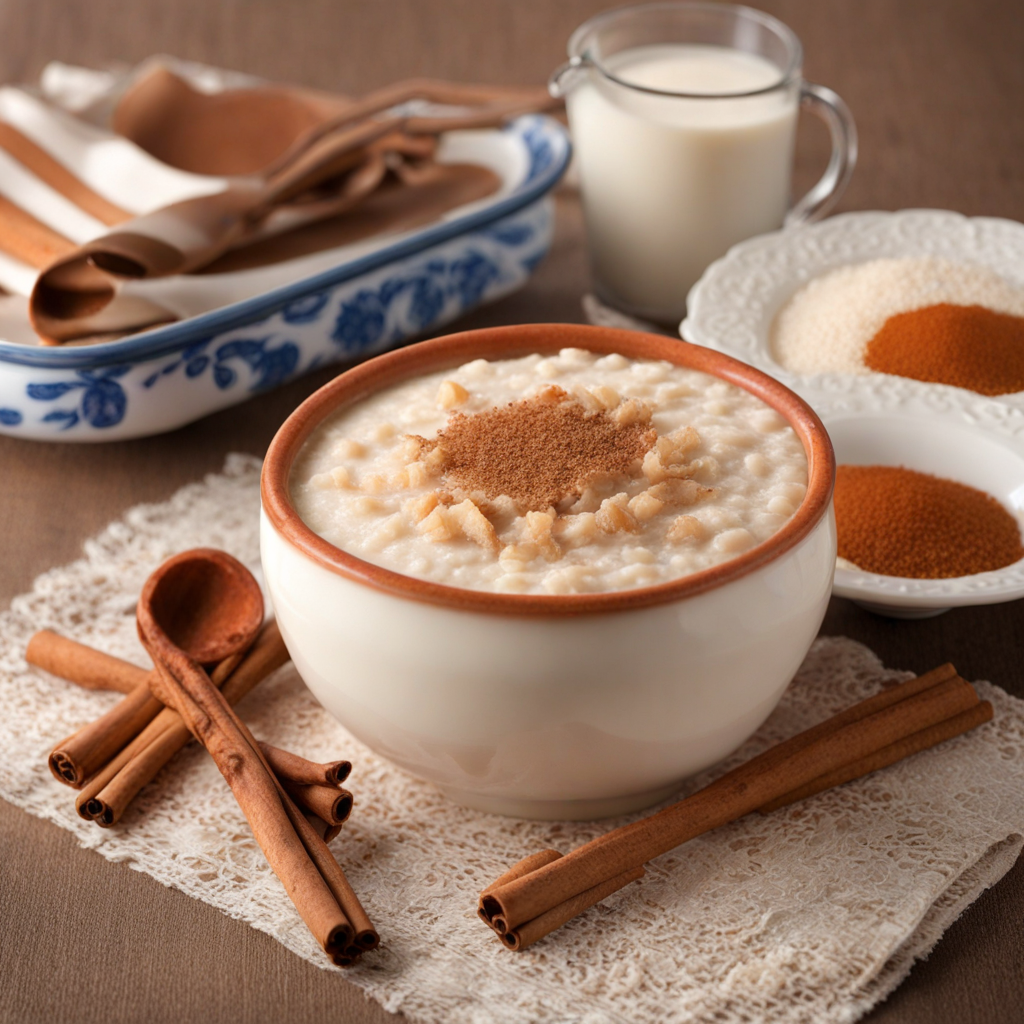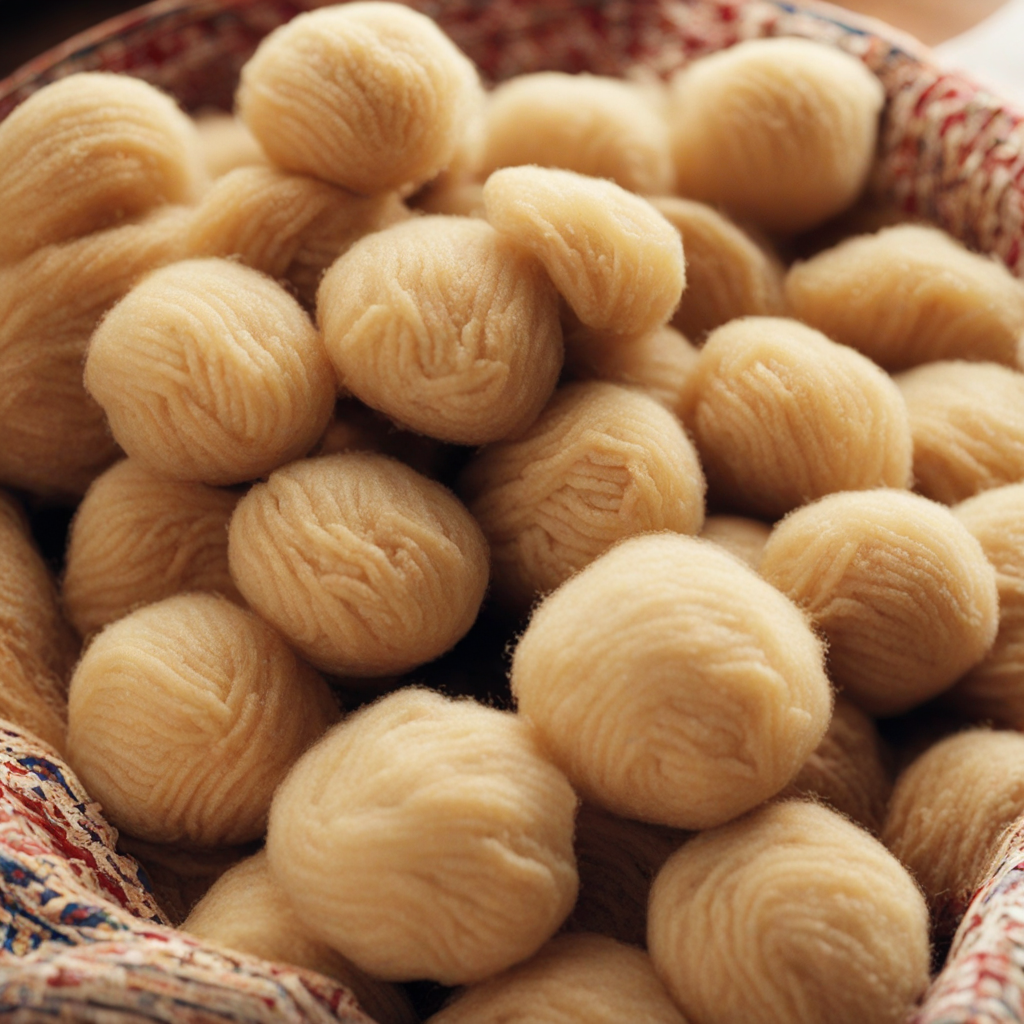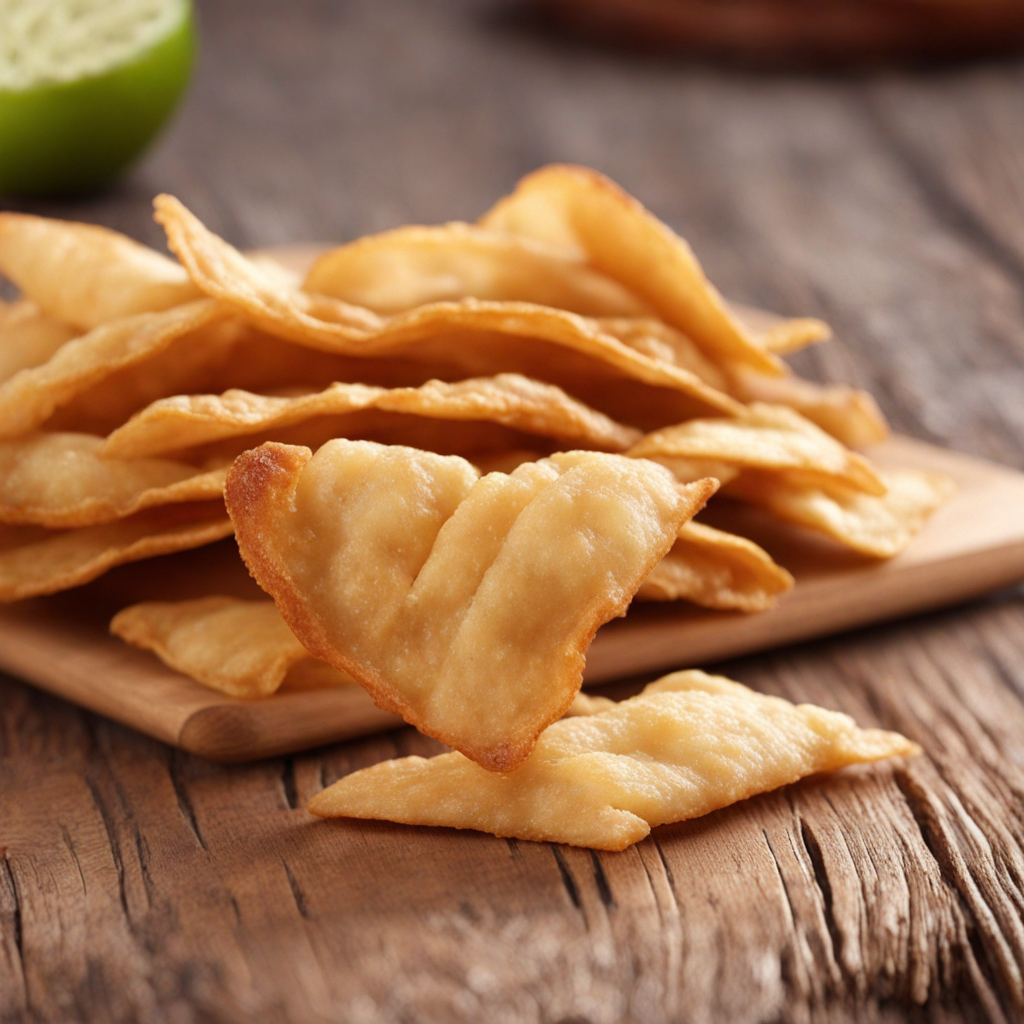Arroz con Leche
Arroz con Leche is a delightful dish that embodies the comforting flavors and textures of traditional Paraguayan cuisine. This creamy rice pudding is made by slowly cooking rice in milk, resulting in a luscious, velvety texture that melts in your mouth. The sweetness of the milk is beautifully balanced with the addition of sugar, creating a rich and satisfying dessert that is both indulgent and comforting. Each spoonful offers a warm and inviting experience, reminiscent of home-cooked meals shared with loved ones. To elevate the flavor profile, Arroz con Leche is often infused with aromatic spices such as cinnamon and vanilla. The warm notes of cinnamon add a delightful warmth, while the vanilla lends a subtle sweetness that enhances the overall experience. Some variations even incorporate a hint of citrus zest, which brightens the dish and adds an unexpected twist, making it a delightful treat for the senses. This beloved dessert is typically served chilled or at room temperature, making it perfect for any occasion. It is often garnished with a sprinkle of cinnamon or a drizzle of caramel sauce, adding an extra touch of elegance. Whether enjoyed as a simple family dessert or served at festive gatherings, Arroz con Leche is a true representation of Paraguayan hospitality, inviting everyone to partake in its rich, comforting flavors that celebrate the essence of home cooking.
How It Became This Dish
The Sweet Journey of Arroz con Leche: A Paraguayan Delight #### Origins Arroz con leche, or rice with milk, is a beloved dish that has transcended borders and cultures, finding a special place in the hearts of many, particularly in Latin America and Spain. The dish is characterized by its comforting blend of rice, milk, sugar, and spices, offering a creamy texture and a sweet flavor that evokes nostalgia. While variations of arroz con leche can be found in countries such as Mexico, Peru, and Spain, the Paraguayan version has its own unique twist that reflects the country's rich cultural tapestry. The origins of arroz con leche can be traced back to the introduction of rice to the Americas by Spanish colonizers in the 16th century. Rice, originally cultivated in Asia, became a staple crop in various parts of Latin America. In Paraguay, the Guaraní people, an indigenous group, had their own traditional dishes that incorporated local ingredients. The fusion of European culinary techniques with indigenous ingredients gave birth to many dishes, including the sweet and creamy arroz con leche. #### Cultural Significance In Paraguay, arroz con leche is more than just a dessert; it holds cultural significance that is intertwined with family gatherings, celebrations, and traditional customs. It is a dish often prepared for special occasions, such as birthdays, religious festivals, and communal feasts. The preparation of arroz con leche often involves the participation of family members, making it a communal activity that fosters bonding and connection. The dish is also a symbol of hospitality. In Paraguayan culture, sharing food is an important gesture of goodwill and friendship. When guests visit a home, offering them a bowl of warm arroz con leche is a way of expressing warmth and generosity. The comforting aroma of cinnamon and vanilla wafting through the air creates an inviting atmosphere, making it an integral part of social gatherings. Additionally, arroz con leche is often associated with childhood memories. Grandmothers and mothers pass down the recipe from generation to generation, creating a sense of continuity and tradition. The dish evokes feelings of nostalgia, reminding many Paraguayans of their childhood and the care that went into its preparation. #### Development Over Time As Paraguay's culinary landscape evolved, so did arroz con leche. The basic recipe remained largely the same, but regional variations and personal touches began to emerge. While the fundamental ingredients—rice, milk, sugar, and spices—remained constant, Paraguayans started to incorporate local flavors and ingredients into the dish. One notable variation in Paraguay is the use of "leche de coco" (coconut milk), which adds a tropical twist to the traditional recipe. This adaptation reflects the influence of the diverse agricultural landscape of Paraguay, where coconuts are cultivated. The combination of coconut milk with the classic ingredients creates a rich, velvety texture and a unique flavor profile that distinguishes Paraguayan arroz con leche from its counterparts in other countries. In addition to coconut milk, some recipes incorporate sweetened condensed milk, further enhancing the creaminess and sweetness of the dish. The use of local spices, such as cloves and nutmeg, also adds complexity to the flavor, creating a delightful symphony of tastes. As Paraguay became more urbanized and globalized in the late 20th and early 21st centuries, the dish continued to evolve. Today, modern chefs and home cooks alike experiment with various presentations and flavor combinations. Some innovative interpretations of arroz con leche include the addition of fruits, such as mango or pineapple, and the use of alternative sweeteners, catering to contemporary dietary preferences. Despite these modern adaptations, the essence of arroz con leche remains unchanged. It continues to be a beloved comfort food for many Paraguayans, a dish that evokes feelings of home and tradition. Its presence on festive tables and during family gatherings is a testament to its enduring legacy. #### Arroz con Leche in the Modern Era In recent years, there has been a resurgence of interest in traditional Paraguayan cuisine, and arroz con leche has gained recognition in culinary circles both locally and internationally. As chefs explore the depths of Paraguay's gastronomic heritage, they often highlight arroz con leche as a quintessential dessert that encapsulates the country's history and culture. Food festivals and culinary events in Paraguay frequently feature arroz con leche, showcasing its versatility and adaptability. Chefs experiment with plating techniques, transforming the humble dish into a modern culinary masterpiece while still honoring its traditional roots. This fusion of old and new has reinvigorated interest in Paraguayan cuisine, bringing it to the forefront of gastronomic exploration. Moreover, social media has played a significant role in propagating the popularity of arroz con leche. Food bloggers and influencers share their own twists on the classic recipe, resulting in a digital renaissance for this beloved dish. Home cooks are inspired to recreate their family recipes, often adding their own flair, thus ensuring that the legacy of arroz con leche continues to thrive in the 21st century. #### Conclusion Arroz con leche is more than just a dish; it is a cultural artifact that tells the story of Paraguay's history, blending indigenous traditions with colonial influences. Its evolution over time reflects the adaptability of Paraguayan cuisine, showcasing the importance of family, community, and hospitality in Paraguayan culture. As it continues to be cherished by generations, arroz con leche remains a symbol of warmth and comfort, connecting Paraguayans to their roots and to one another. Whether served at a festive gathering or enjoyed as a simple dessert at home, this creamy, sweet treat encapsulates the essence of Paraguayan culinary heritage—a delicious reminder of the past, present, and future.
You may like
Discover local flavors from Paraguay







